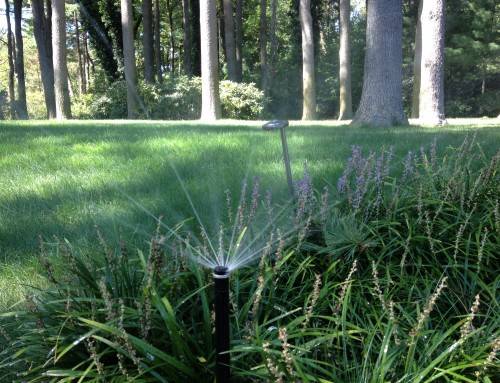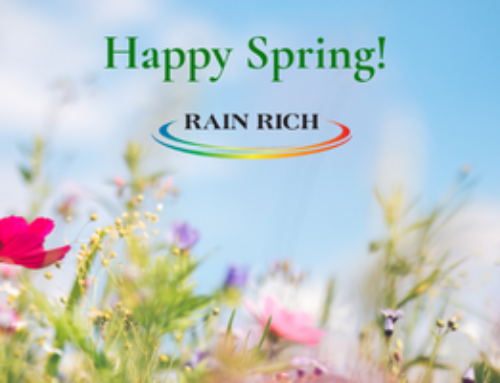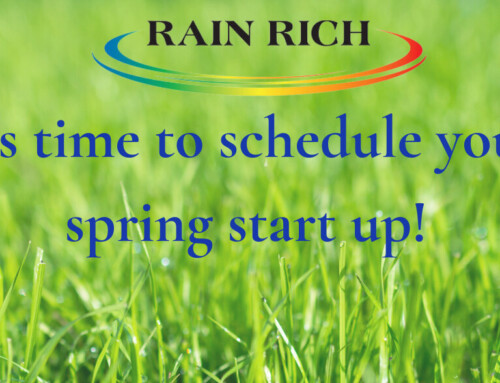I get asked this question all the time and according to different irrigation owners it means different things. For some, turning the water on and programming the controller are enough. Unfortunately, that will not work well in the long run especially when we begin having hot weather and dry conditions.
At Rain Rich we have a comprehensive approach and take a long hard look at the entire system from turning on the water all the way to the last sprinkler head on the last zone. There are no gray areas with an irrigation system either it works well or your lawn and shrubs shrivel up! As much as we can observe and tweak we take the time on a spring start up to examine every component. Of course, we can’t see underground to see what’s going on however we have over 240 years of company experience to tell if something is not working right. Our mission is to make sure your sprinkler system is working 100% properly and for your landscape to receive the right amount of water at the right time.
Each service technician has a list of all the items that they are required to check and if there is a problem they are to notify you of the repairs required and a quote. We spend a lot of time training on many different types of systems manufactured by many sprinkler companies and they are all different with many different variations of design and operation. It may all look the same to you, but it isn’t. Providing the proper service at the correct time is important for several reasons; you have a system ready for when the weather turns warm and you will have a system that will last a long time with minimal headaches when you need it the most.
Here is a list of items we check each time we turn your sprinkler system on:
- Slowly turn the main sprinkler valve on and initially open only half way. Allow the sprinkler system to fill up slowly. Check for leaks in the main pipe line and manifold during this process. Listen carefully to hear for running water. If possible check water meter and look for needle or triangle spinning.
- Listen and look for leaks when manifold is pressurized.
- Inspect manifold, solenoid valves, and electrical connections for damage.
- Visually inspect Backflow Device for leaks. Testing is an additional fee.
- Open each zone valve manually and individually and separately pressurize each zone. Visually check for leaks in the area that the zone operates. Do all the heads pop up? Do they all rotate? Do they all spray properly?
- Check all sprinkler heads for leaks, pop-up, and rotation.
- Check each rotary sprinkler for proper rotation. Clean each nozzle. Make adjustment if necessary.
- Check each spray sprinkler for pop up and spray. Is the spray heads watering in the correct direction.
- Open valve for drip zones and run for 5 – 10 minutes before completing inspection.
- Test all zone valves and make sure that they fully close when in “off” position. Dirt and debris can work themselves into system.
- Operate each zone valve manually from controller to insure that controller opens and closes zone valves.
- Visually check rain sensor for damage and operation. Testing is an additional fee.
- Clean overgrown grass away from sprinkler heads.
- Visually inspect landscape for coverage. Has anything changed? Are there new plans for future work? Pool, patio, driveway, plantings, gardens etc.?
If you have any questions, please feel free to call our Greenlawn. Long Island office at 631-423-2211 or you may contact us online by clicking here.






